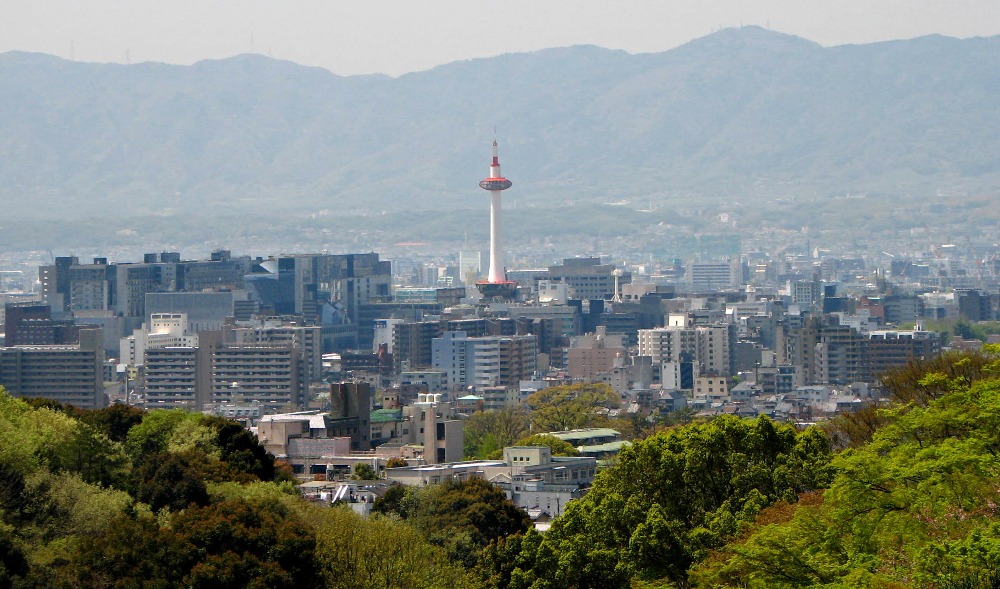The first part of our time in Japan was on the relatively quiet southern island of Kyushu, and largely in the very rural, heavily forested Kunasaki Peninsula. Iwakuni, the focus on my last blog, was on the large central island of Honshu, but still a small town.
But now . . . big cities. First, Hiroshima, a city of 1.2 million, and now Kyoto, 1.6 million, with 3.8 million in the metro region. The focus of a visit to Hiroshima is, of course, the memorials and exhibits related to the August 6, 1945 atomic bombing. The photos and first-hand accounts are sobering, devastating really. The massacre of the innocents, as always in war, and so today in Gaza, Ukraine, and Sudan.
Kyoto isn’t quite what I expected. Having seen plenty of photos of the temples and gardens of Kyoto I wasn’t prepared for the dense and busy city that we encountered on stepping off the “bullet” train. To be sure, the temples, gardens, and parks are here, and we enjoyed several of them today as we spent about half our day on a bike-tour of Kyoto, really in one part in the northwest section of the Kyoto. Good times. Another thing about those classic Kyoto photos . . . they usually portray the bright colors of autumn in gorgeous Japanese gardens. Well, the bright colors of autumn ain’t here yet. 80 degrees today.
Despite the size and traffic of the city, bikes are very common here and a great way to get around (Kyoto being largely flat) — providing you have a guide, which we did. Otherwise, we would have been hopelessly lost in short order.
First stop on our bike tour was a large and busy Shinto shrine, Nishiki Tenmangu. Busy because today is a holiday here and many people observe it by a stroll on the grounds of a shrine or temple, accompanied by prayers and offerings to the deities memorialized there. The shrine which we visited venerated a renowned scholar, deified post-mortem. Lots of prayer cards from those with big exams coming up. And an opportunity to pray for academic success. I passed on that, deciding I’m pretty much out of the running for that.

Whenever you enter a Shinto shrine there is a ritual of purification, using water that flows through bamboo (see right). Some have ladles with which to catch the water for the rites.
This shrine dispensed with ladles during COVID and has stayed with catching water in your hands. There is a big emphasis on ritual purity here, which for a western Christian is a bit of window into a similar emphasis in first century Judaism. Jesus was often at odds with purity culture, saying things like, “It’s not what is outside a person that makes them unclean. It is what is in a person’s heart that makes him or her unclean.”

At a Zen Temple we visited there were several wonderful “dry fish pond gardens” with swept sand representing water. One had been created by a Japanese convert to Christianity who hid a cross in the design of the garden.
Hid because there was a long period of very brutal persecution of Christians in Japan (see Shusake Endo’s powerful novel, Silence). Those who clung to their faith found ways to do so in hiding and in secret.Can you find the cross hidden in the garden?
Like many “developed” societies, Japan has a low fertility or birth rate, and is far from replacing its population. Some of the small towns we visited in Kyushu were nearly ghost-towns with half of the homes up for sale. You can buy a home in rural or small town Japan for a very reasonable price.

Related to this, I noted the number of dogs being conveyed around parks and temple grounds in baby carriages, actually a lot more dogs in baby carriages than babies. One little dog, not these, had the benefit of a portable, electric fan attached to the front of his carriage to keep him cool. I do think these pugs are pretty adorable. In Japan there are childless dog gentlemen pushing strollers.
During our rural phase we stayed in very old, traditional inns nestled in the mountains where our group of 14 filled the place up. They were incredibly charming.
Now, in Kyoto, we are in a hotel that has a capacity of 700 and seems full up — lots of international visitors. Nine percent of the Japanese economy is based on tourism, which is big. Second only to Japan’s auto industry.
Discover more from Post Alley
Subscribe to get the latest posts sent to your email.

Glad to see this. Kyoto is one of my favorite places in the world. Temples and shrines are an important part, of course. But some of the attraction is the “big city” part. It offers intellectual and artistic stimulation way beyond its population. It’s not necessarily a place where Japanese born elsewhere would feel comfortable living, but everyone visits. There are so many leading universities and thinkers, artists, doers from all over Japan and the world.